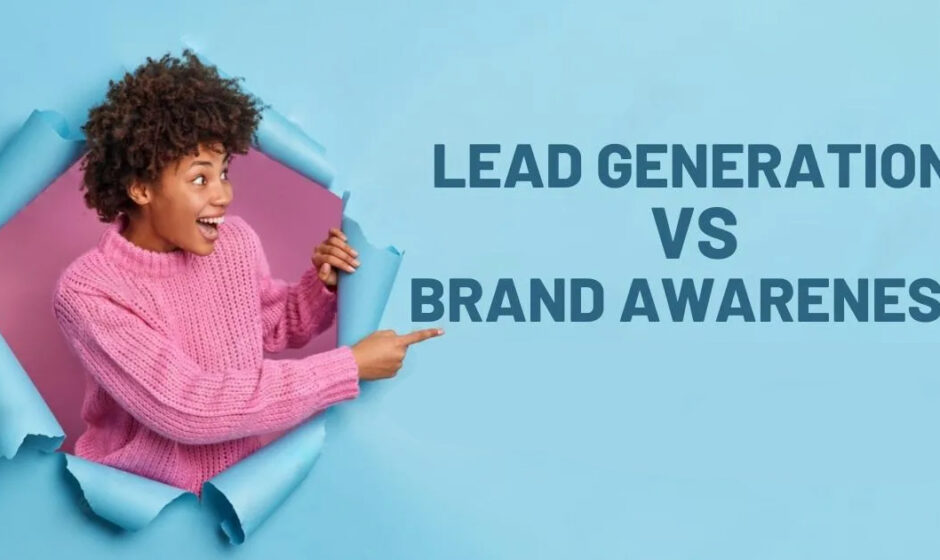In today’s hyper-competitive digital economy, companies face one fundamental marketing challenge: where should they invest lead generation or brand awareness? This is not just a budget decision; it’s a strategic one. Each plays a vital role in the customer journey, yet they serve distinctly different purposes. Understanding how to balance both can catapult your business toward sustainable success.
Defining the Battle: What Is Lead Generation?
To begin with, let’s clarify what lead generation really means. Simply put, it’s the process of attracting and converting strangers into prospects by capturing their contact details. These leads, ideally, represent individuals who show genuine interest in your product or service. Typically, lead generation relies heavily on landing pages, email marketing, downloadable resources, contact forms, and calls to action (CTAs).
What makes lead generation so attractive? For one, it delivers measurable results. You can calculate your cost per lead (CPL), monitor conversion rates, and assess how many of those leads actually turn into paying customers. Moreover, it allows for tight targeting you can focus on people already showing interest in your niche.
Lead generation thrives on relevance. When your offer directly aligns with the needs of your audience, conversions come quickly. Additionally, automation tools like CRMs, email autoresponders, and lead scoring systems enhance this process, making follow-ups efficient and effective.
Understanding Brand Awareness: More Than Just a Logo
Conversely, brand awareness refers to how familiar your audience is with your brand, your mission, and your offerings. Unlike lead generation, brand awareness does not always aim for an immediate sale. Instead, it builds trust, recognition, and emotional connection. Whether through viral social media campaigns, influencer endorsements, blog content, or video storytelling, brand awareness creates long-lasting impressions.
Indeed, strong brand awareness often precedes lead generation. After all, if people don’t know who you are, why would they trust you enough to share their contact details?
Moreover, brand awareness enhances other marketing channels. When people recognize your name in search results or social feeds, they’re more likely to click. This recognition improves your click-through rate (CTR), which in turn boosts your ad quality score, SEO rankings, and overall visibility.
Why Lead Generation Feels Like the Quick Win
Marketers often gravitate toward lead generation because of its tangible, short-term payoffs. With the right funnel in place, businesses can drive traffic to a landing page, offer a lead magnet (like a free ebook), and collect dozens or even hundreds of emails within days. These email addresses, when nurtured, convert into customers.
Not only that, but the effectiveness of lead generation is easily measured. You can run A/B tests, optimize ad copy, tweak form fields, and see what works best. The feedback loop is fast, making it a favorite among performance-driven marketers.
However, an overreliance on lead generation can be risky. If your audience perceives you as too sales-focused, they might unsubscribe or disengage. Therefore, incorporating value-based nurturing campaigns is essential to keep prospects interested.
Why Brand Awareness Is the Long Game You Can’t Ignore
Although it’s tempting to double down on lead generation, neglecting brand awareness is a risky move. Why? Because even the best lead capture forms can’t overcome a lack of trust. In fact, many conversions fall through simply because the prospect isn’t familiar with the brand.
That’s where awareness campaigns shine. By consistently putting your brand in front of your audience through blog content, social posts, YouTube videos, podcasts, or even traditional ads you create recognition. Eventually, when people face a buying decision, they gravitate toward the brand they already know.
Brand awareness campaigns also serve another crucial purpose: they humanize your brand. People don’t just want to buy from companies; they want to buy from people they feel connected to. Sharing your values, company culture, and success stories builds a deeper bond that goes beyond price or product features.
Lead Generation vs Brand Awareness: When to Use Each
Now, let’s address the real question: When should your business prioritize lead generation, and when should it focus on brand awareness?
Focus on Lead Generation When:
- You need immediate sales or cash flow.
- You have a product that solves a specific, urgent problem.
- You’ve already built some awareness and now need conversions.
- You can clearly define and target your audience.
- You have systems in place to follow up with leads (like CRM and automation tools).
- You’re launching a time-sensitive promotion or campaign.
Focus on Brand Awareness When:
- You’re entering a new market or launching a new product.
- Your brand is unknown in the industry or niche.
- You want to build long-term trust and community.
- You’re running a multi-touch campaign where the customer journey is long.
- You aim to position yourself as a thought leader.
- You want to drive more organic search traffic and improve SEO authority.
Metrics That Matter
While both strategies differ in objectives, they each come with their own set of metrics. Understanding what to measure can help you allocate budget more effectively.
Lead Generation Metrics:
- Cost Per Lead (CPL)
- Conversion Rate
- Number of Qualified Leads
- Lead-to-Customer Ratio
- Customer Acquisition Cost (CAC)
- Sales Pipeline Velocity
Brand Awareness Metrics:
- Impressions and Reach
- Direct Traffic
- Branded Search Queries
- Social Shares and Mentions
- Content Engagement
- Brand Recall and Sentiment
Tracking both sets of metrics offers a well-rounded view of how your marketing performs over time.
Can You Combine Both? Absolutely.
The smartest marketers don’t choose between the two they integrate them. For example, a blog post (brand awareness) that offers a downloadable PDF (lead generation) gives you the best of both worlds. You first attract your audience with valuable content, then offer them something deeper in exchange for their contact info.
Similarly, an influencer campaign can raise awareness, and simultaneously promote a limited-time offer that captures leads. You can even set up retargeting ads first warming up cold audiences with educational content, then targeting them with a lead magnet once they’re familiar with your brand.
Integrated campaigns foster momentum. When awareness feeds into lead generation, your funnel becomes more efficient, your cost per lead drops, and your conversions rise. Additionally, integrated efforts improve marketing team alignment, allowing content creators and performance marketers to work toward shared goals.
Common Mistakes to Avoid
- Relying solely on lead generation: If people don’t know your brand, even the best funnel won’t convert.
- Ignoring metrics: If you’re not tracking success, you’re wasting time and money.
- Using brand awareness as an excuse for poor conversion: Even awareness must tie back to business goals.
- Failing to nurture leads: Capturing leads isn’t enough; you must guide them through the sales journey.
- Creating disconnected messaging: Your branding and lead generation offers must align in tone and value.
- Lack of consistency: Sporadic campaigns create confusion. Consistency builds trust.
Final Thoughts: Combine and Conquer
So, what’s the final verdict in the debate of lead generation vs brand awareness? The answer lies in synergy. While lead generation delivers immediate ROI, brand awareness fuels long-term loyalty and market positioning. Neither works in isolation. Therefore, integrating both into your marketing strategy ensures not only conversions today but also enduring relationships tomorrow.
Investing in both approaches helps build a scalable, sustainable, and trusted brand. Whether you’re a startup looking for your first customers or an enterprise strengthening your market dominance, understanding the balance between lead generation vs brand awareness is your key to unlocking explosive growth.



